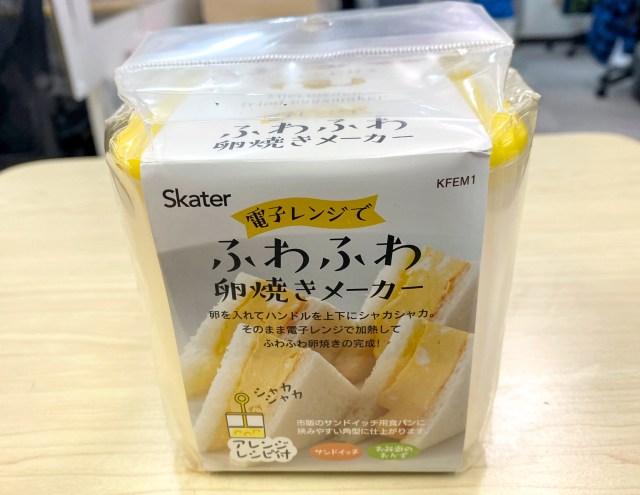
The key ingredient for the ultimate Japanese egg sandwich.
Japan may be well known for its traditional cuisine, but fusion cuisine here is just as exciting, and one particular fusion food that’s captured our hearts is the humble “Kissaten Tamago Sando“, or in English: “Coffee Shop Egg Sandwich“.
Kissaten are retro coffee shops that serve up not just tea and coffee but desserts and light meals as well. The kissaten egg sandwich is a coffee shop mainstay that conjures up an air of nostalgia for the Showa era (1926–1989), the heyday for kissaten, and what makes them unique is the fact that they contain thick, fluffy omelettes.
In Japan, omelettes are a thing unto themselves, cooked in rectangular frypans and gradually rolled over in layers to create thickness while retaining a light, moist and fluffy texture. It takes a bit of skill to learn how to make them properly, with chopsticks involved in the rolling, and while they taste great, they require quite a bit of time and patience to make.
So what do you do when you’ve got a craving for a thick-omelette Coffee Shop Egg Sandwich but are too lazy to make one? If you’re like us, you turn to the Fluffy Japanese Omelette Maker, which we’ll be trying out today.
This gadget promises to take all the hard work out of omelette making, and does away with the need for a pan as it’s designed to be used in the microwave.
Keen to test its effectiveness, we gathered together the following ingredients: eggs, white bread, mayonnaise, milk, and salt.
The first step is to crack the eggs into the container and add two teaspoons of milk, five grams of mayonnaise and a small pinch of salt. Then you pop the yellow plate into the container, cover it with the lid and…push the plate handle up and down.
A bit of force is required to raise and lower the plate with one hand, and the lid will come off if you don’t hold it down with the other hand, so it takes a little bit of getting used to. According to the instructions, the ingredients come together after a minute of plate-pumping, and then it’s time to cook it all in the microwave.
We removed the yellow pumping plate and popped the lidded container into the microwave, cooking the mixture for one minute on 500 watts. The next step is to take the lid off, stir the mixture about 10 times, and then it’s back into the microwave for 30-40 seconds at 500 watts.
Microwaves vary, however, and after 40 seconds, our egg was still runny so we heated it again until it was solid.
Taking it out of the container, we were surprised to find that it did actually look like a thick omelette!
We placed it in between two slices of bread and cut the sandwich in half diagonally to get that coffeehouse egg sandwich look. It had the distinct flavour we were hoping for, but unfortunately our creation left a lot to be desired in terms of looks, so we decided to have another go at making our dream sandwich.
This time we were aiming for a uniform thickness and a result that looked more like the egg sandwich on the packaging. We had a hunch our mistake lay in the cooking, so we decided to raise the temperature of the microwave to get a more even surface on the omelette.
The higher temperature worked a treat, because when we removed the omelette, it was much more uniform, both in colour and shape.
And when we used the omelette to make our egg sandwich, it looked much more like the ones served up at a kissaten.
And what about the taste? It was, in a word, delicious! It had a wonderful creaminess to it and a light, airy texture that satisfied all our egg sandwich cravings.
Now that 2020 has us spending a lot more time at home than usual, we’re determined to keep pumping this Fluffy Japanese Omelette Maker until we perfect the art of kissaten egg sandwich making.
Priced at 660 yen (US$6.20) plus tax, it’s a small investment that saves a lot of time and effort, and it now has a place at home in our kitchen with our other newly acquired gadgets for making gyoza and homemade chips.
Images ©SoraNews24
● Want to hear about SoraNews24’s latest articles as soon as they’re published? Follow us on Facebook and Twitter!
[ Read in Japanese ]

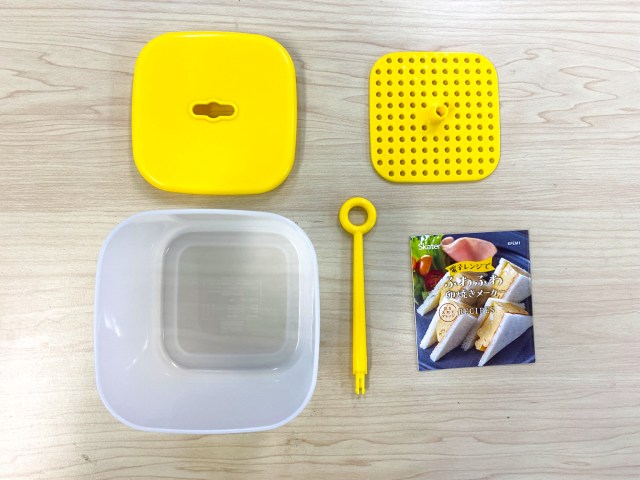
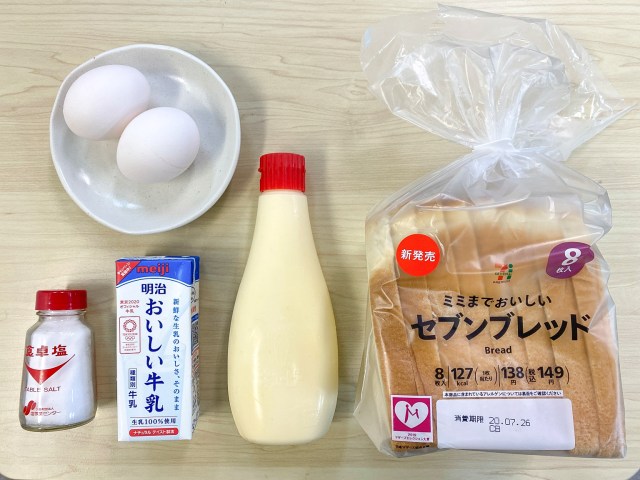
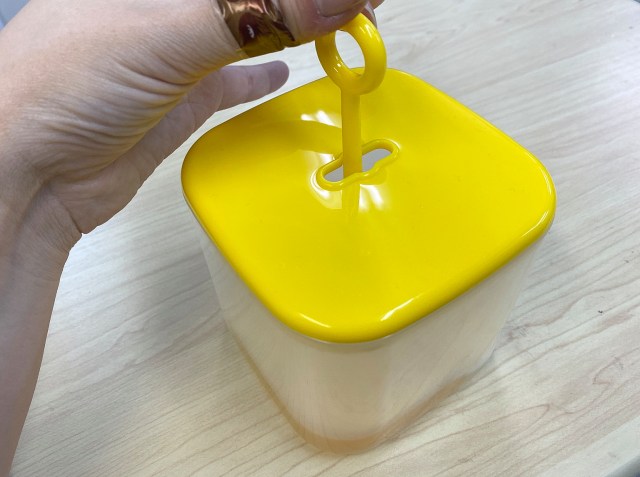
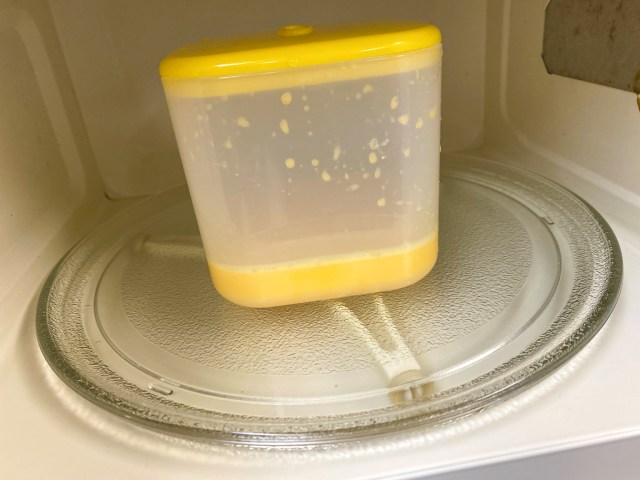
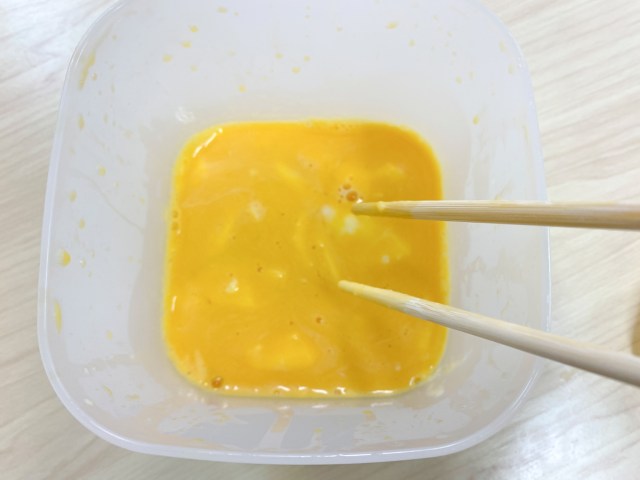
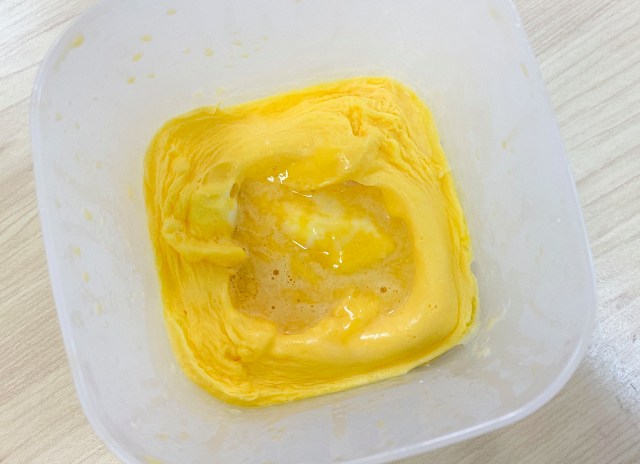
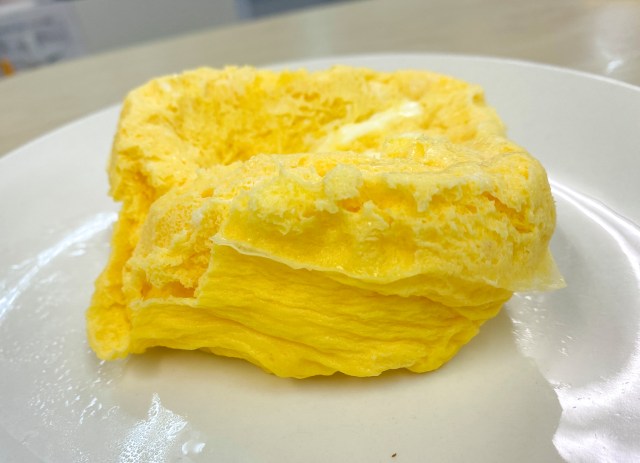
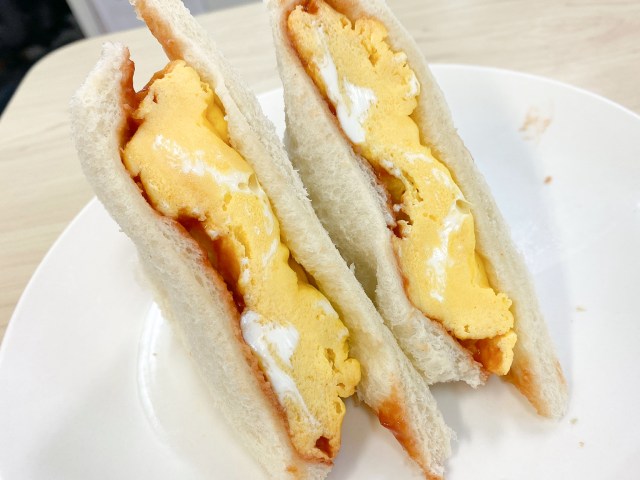
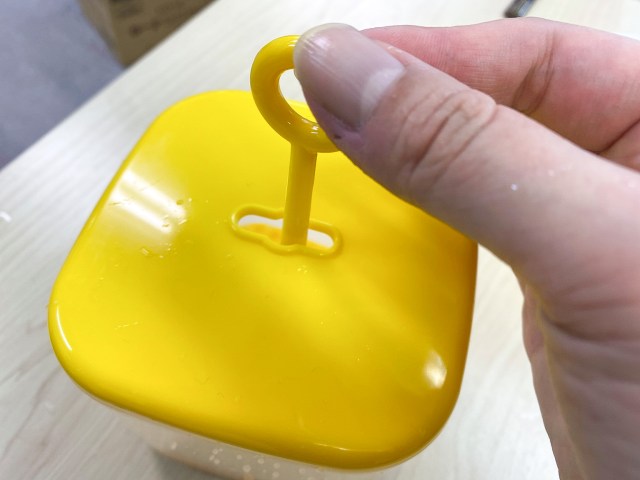

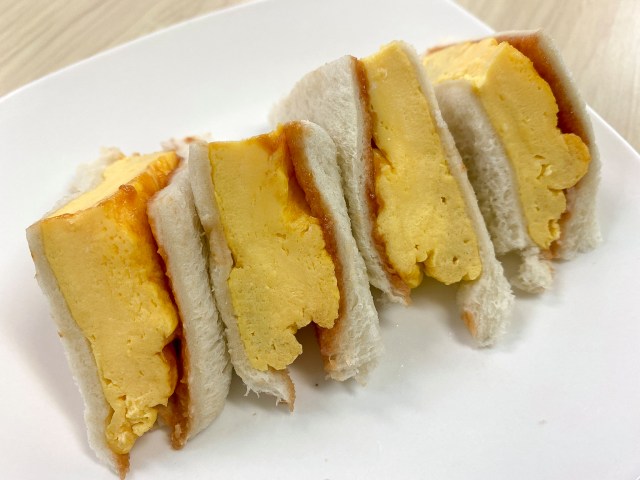
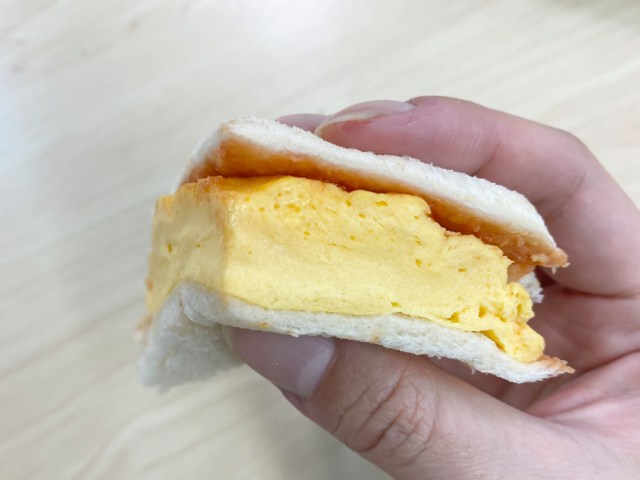
 New contraption from Japan lets you cook paper-thin egg omelets in your microwave
New contraption from Japan lets you cook paper-thin egg omelets in your microwave Japanese marshmallow omelette: A real thing you can (and should) make right away 【Rocket Kitchen】
Japanese marshmallow omelette: A real thing you can (and should) make right away 【Rocket Kitchen】 We zapped up some tasty hot sandwiches in the microwave with 3COINS’ new gadget from Japan
We zapped up some tasty hot sandwiches in the microwave with 3COINS’ new gadget from Japan How to make the most beautiful at-home tamagokakegohan ever with a 100 yen store kitchen gadget
How to make the most beautiful at-home tamagokakegohan ever with a 100 yen store kitchen gadget We try Kaldi’s microwavable Omelet Rice to find out if it really cooks that easily【SoraKitchen】
We try Kaldi’s microwavable Omelet Rice to find out if it really cooks that easily【SoraKitchen】 Private booths are coming to Japan’s Shinkansen bullet trains even sooner than we’d thought【Video】
Private booths are coming to Japan’s Shinkansen bullet trains even sooner than we’d thought【Video】 Rakuten randomly offers 58 New Year’s osechi feasts in Japan, but did we get a star or a dud?
Rakuten randomly offers 58 New Year’s osechi feasts in Japan, but did we get a star or a dud? The oldest tunnel in Japan is believed to be haunted, and strange things happen when we go there
The oldest tunnel in Japan is believed to be haunted, and strange things happen when we go there Daiso unveils new official mascot, Daizo the elephant
Daiso unveils new official mascot, Daizo the elephant Coca-Cola Japan unveils new sakura design bottle for cherry blossom season 2019
Coca-Cola Japan unveils new sakura design bottle for cherry blossom season 2019 Yokohama restaurant serves fried axolotl, along with giant isopod, camel, and crocodile
Yokohama restaurant serves fried axolotl, along with giant isopod, camel, and crocodile Cosplay costume room tour by Japan’s number-one cosplayer Enako is an eye-opener【Video】
Cosplay costume room tour by Japan’s number-one cosplayer Enako is an eye-opener【Video】 Four Shinto shrines to pray for love at in Japan to start the New Year
Four Shinto shrines to pray for love at in Japan to start the New Year Original Totoro plush toys from 80s and 90s re-issued for Studio Ghibli exhibition
Original Totoro plush toys from 80s and 90s re-issued for Studio Ghibli exhibition Dragon Quest Burgers and Slime drinks are coming to McDonald’s Japan【Video】
Dragon Quest Burgers and Slime drinks are coming to McDonald’s Japan【Video】 Starbucks Japan ready to get Year of the Horse started with adorable drinkware and plushies【Pics】
Starbucks Japan ready to get Year of the Horse started with adorable drinkware and plushies【Pics】 Japanese beef bowl chain Sukiya’s 2026 Smile Box lucky bag basically pays for itself
Japanese beef bowl chain Sukiya’s 2026 Smile Box lucky bag basically pays for itself Hayao Miyazaki says Happy New Year to Studio Ghibli fans with new art for Year of the Horse
Hayao Miyazaki says Happy New Year to Studio Ghibli fans with new art for Year of the Horse Cup Noodle tries an authentic Jiro-style ramen, but something’s not quite right
Cup Noodle tries an authentic Jiro-style ramen, but something’s not quite right The best Starbucks Japan Frappuccinos we want to drink again in 2026
The best Starbucks Japan Frappuccinos we want to drink again in 2026 We revisited Sweets Paradise after a decade to see if Japan’s dessert buffet still delivers
We revisited Sweets Paradise after a decade to see if Japan’s dessert buffet still delivers That time Seiji called JASRAC to ask why he didn’t get paid royalties for his song being on TV
That time Seiji called JASRAC to ask why he didn’t get paid royalties for his song being on TV We found possibly the quietest Japanese-style hotel in Tokyo’s bustling Shinjuku district
We found possibly the quietest Japanese-style hotel in Tokyo’s bustling Shinjuku district Pizza Hut Japan’s hot lucky bags are perfect for a New Year’s pizza party
Pizza Hut Japan’s hot lucky bags are perfect for a New Year’s pizza party Japan’s oldest largetooth sawfish in captivity back on display in Mie Prefecture
Japan’s oldest largetooth sawfish in captivity back on display in Mie Prefecture 7-Eleven Japan starts new temporary luggage storage service in over 300 branches
7-Eleven Japan starts new temporary luggage storage service in over 300 branches Disillusionment at Tsukiji’s tourist-target prices led us to a great ramen restaurant in Tokyo
Disillusionment at Tsukiji’s tourist-target prices led us to a great ramen restaurant in Tokyo Starbucks teams up with 166-year-old Kyoto doll maker for Year of the Horse decorations【Photos】
Starbucks teams up with 166-year-old Kyoto doll maker for Year of the Horse decorations【Photos】 Tokyo considering law requiring more trash cans following litter increase in heavily touristed area
Tokyo considering law requiring more trash cans following litter increase in heavily touristed area Tokyo’s Tsukiji sushi neighborhood asks tour groups to stay away for the rest of the month
Tokyo’s Tsukiji sushi neighborhood asks tour groups to stay away for the rest of the month Tokyo event lets you travel back in time, for free, to celebrate 100 years since Showa era start
Tokyo event lets you travel back in time, for free, to celebrate 100 years since Showa era start Japan may add Japanese language proficiency, lifestyle classes to permanent foreign resident requirements
Japan may add Japanese language proficiency, lifestyle classes to permanent foreign resident requirements Sanrio theme park in Japan announces plans to expand into a Sanrio resort
Sanrio theme park in Japan announces plans to expand into a Sanrio resort Stamina-destroying “Paralysis Noodles” are Tokyo’s newest over-the-top ramen innovation
Stamina-destroying “Paralysis Noodles” are Tokyo’s newest over-the-top ramen innovation Survey asks foreign tourists what bothered them in Japan, more than half gave same answer
Survey asks foreign tourists what bothered them in Japan, more than half gave same answer Japan’s human washing machines will go on sale to general public, demos to be held in Tokyo
Japan’s human washing machines will go on sale to general public, demos to be held in Tokyo Japan’s deadliest food claims more victims, but why do people keep eating it for New Year’s?
Japan’s deadliest food claims more victims, but why do people keep eating it for New Year’s? We deeply regret going into this tunnel on our walk in the mountains of Japan
We deeply regret going into this tunnel on our walk in the mountains of Japan Studio Ghibli releases Kodama forest spirits from Princess Mononoke to light up your home
Studio Ghibli releases Kodama forest spirits from Princess Mononoke to light up your home Major Japanese hotel chain says reservations via overseas booking sites may not be valid
Major Japanese hotel chain says reservations via overseas booking sites may not be valid Put sesame oil in your coffee? Japanese maker says it’s the best way to start your day【Taste test】
Put sesame oil in your coffee? Japanese maker says it’s the best way to start your day【Taste test】 No more using real katana for tourism activities, Japan’s National Police Agency says
No more using real katana for tourism activities, Japan’s National Police Agency says Starbucks Japan reveals new sakura drinkware collection, inspired by evening cherry blossoms
Starbucks Japan reveals new sakura drinkware collection, inspired by evening cherry blossoms Updated cherry blossom forecast shows extra-long sakura season for Japan this year
Updated cherry blossom forecast shows extra-long sakura season for Japan this year Super-cheap, super-convenient rice-cooking mug is a new kitchen gadget all-star from 3 Coins
Super-cheap, super-convenient rice-cooking mug is a new kitchen gadget all-star from 3 Coins Salt Milk Bean Paste…Omelette? Japanese bakery adds a surprise to its cake section
Salt Milk Bean Paste…Omelette? Japanese bakery adds a surprise to its cake section Japan’s one-person sandwich press, a “God item” for solo diners, sells out online
Japan’s one-person sandwich press, a “God item” for solo diners, sells out online Japanese omelette sushi changes the way we think about makizushi
Japanese omelette sushi changes the way we think about makizushi We eat a canned omelette from a Japanese vending machine and hope for the best
We eat a canned omelette from a Japanese vending machine and hope for the best We create a Japanese izakaya pub at home with an amazing all-in-one kitchen gadget
We create a Japanese izakaya pub at home with an amazing all-in-one kitchen gadget Making gyoza is a literal snap with this awesome Japanese kitchen gadget
Making gyoza is a literal snap with this awesome Japanese kitchen gadget Don’t throw out leftover rice! Testing to find the best rice freezing/microwaving container
Don’t throw out leftover rice! Testing to find the best rice freezing/microwaving container New Japanese gadget is like a toaster for instant food pouches, gets you fed in a jiffy
New Japanese gadget is like a toaster for instant food pouches, gets you fed in a jiffy How to make microwave rice packs into something you’ll actually be happy to eat【SoraKitchen】
How to make microwave rice packs into something you’ll actually be happy to eat【SoraKitchen】 No yolk! Tamagoya egg café’s new menu disguises French toast, pancakes as other breakfast foods
No yolk! Tamagoya egg café’s new menu disguises French toast, pancakes as other breakfast foods We try Dom Dom Burger’s new limited-time-only Spicy Cod Roe Thick Egg Omelet Burger
We try Dom Dom Burger’s new limited-time-only Spicy Cod Roe Thick Egg Omelet Burger It’s time to take a trip to pancake paradise with Japan’s new Warmer Plate kitchen gadget
It’s time to take a trip to pancake paradise with Japan’s new Warmer Plate kitchen gadget Testing the true way to make fluffy pancakes from Japan’s Agricultural Cooperatives Group
Testing the true way to make fluffy pancakes from Japan’s Agricultural Cooperatives Group How to make self-isolation tiramisu with simple ingredients【SoraKitchen】
How to make self-isolation tiramisu with simple ingredients【SoraKitchen】 How to make amazing sweet apple pancakes using a rice cooker 【RocketKitchen】
How to make amazing sweet apple pancakes using a rice cooker 【RocketKitchen】
Leave a Reply